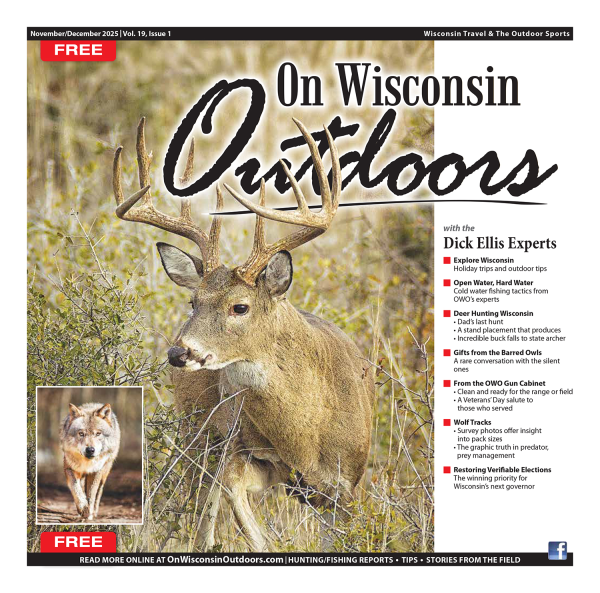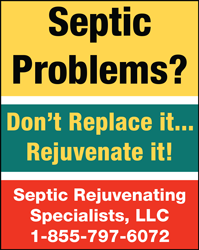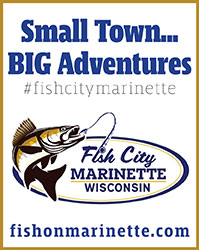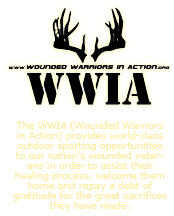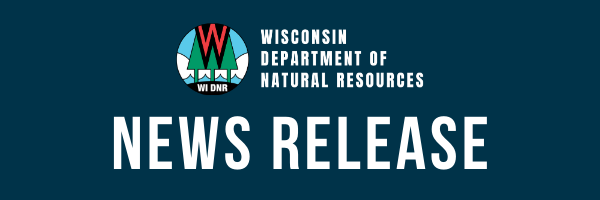| |
|
FOR IMMEDIATE RELEASE: Oct. 25, 2021
Contact: Weston Wegener, DNR Business Support Coordinator
Weston.Wegener@Wisconsin.gov or 608-284-0908
DNR Seeks Public Comments On Green Tier Application For Brady Corporation
Good Hope Road Facility

The Wisconsin DNR is seeking public comments on the Green Tier application for Brady Corporation's Milwaukee manufacturing facility. / Photo Credit: Brady Corporation
MADISON, Wis. – The Wisconsin Department of Natural Resources (DNR) is seeking public comments on a Green Tier application proposal covering environmental activities at Brady Corporation’s (Brady Corp) manufacturing facility located on Good Hope Road in Milwaukee.
If the application is accepted, the Brady Corp facility will join Tier 1 of the Green Tier program.
Tier 1 of Green Tier encourages, recognizes and rewards companies committed to superior environmental performance. Applicants must have a strong environmental record and agree to implement an environmental management system, which is used to set goals, assess their progress, and identify opportunities for continual environmental improvement. In addition, participants must have that system audited regularly and set goals and objectives to maintain superior environmental performance.
Brady Corp’s Milwaukee facility has an ISO 14001 certified environmental management system. ISO 14001 is an internationally recognized certification standard for managing environmental impacts. The facility has future goals that include reducing wastewater, air emissions, and hazardous waste and improving the energy efficiency of the facility.
“Brady Corp has long been committed to environmental stewardship in the communities where we have a presence and our hometown sites in Wisconsin are no exception,” said Tom DeBruine, Director of North American Operations for Brady Corp. “Sustainability efforts play an integral role in Brady’s day-to-day operations, including focusing on energy efficiency, recycling, as well as hazardous waste and air emissions reductions.”
Brady Corp manufactures safety, identification and compliance solutions, including signage, labels and printers, for organizations to improve their productivity and performance of meeting all safety and environmental regulations. Brady Corp has facilities around the globe and is committed to environmentally friendly and sustainable initiatives worldwide.
The DNR will accept written comments until Nov. 24, 2021. Direct comments to Weston Wegener at Weston.Wegener@Wisconsin.gov or 608-284-0908.
For more information, visit the DNR’s webpage for the Brady Corp Good Hope Road application.
|
|
|
|
|
 |
| NEWS RELEASE: DNR Awards Brownfields Grant To Village Of Johnson Creek |
| 10/25/2021 |
| |
|
FOR IMMEDIATE RELEASE: Oct. 25, 2021
Contact: Jodie Peotter, DNR Brownfields, Outreach & Policy Section Chief
Jodie.Peotter@wisconsin.gov or 608-259-6557
DNR Awards Brownfields Grant To
Village Of Johnson Creek
Funds To Support Environmental Assessment of Former Dry Cleaner Property

The grant awarded to the Village of Johnson Creek will support the contractor assessment of a former dry cleaner and laundromat located at 236 Union St. / Photo Credit: Village of Johnson Creek
JOHNSON CREEK, Wis. – The Wisconsin Department of Natural Resources (DNR) today announced the department awarded a Brownfields Grant to the Village of Johnson Creek.
The financial award is from the DNR's Wisconsin Assessment Monies program, which provides contractor services worth up to $35,000 for the environmental assessment and cleanup of eligible brownfields sites.
Brownfields are abandoned, idle and underused commercial or industrial properties where reuse is stalled by potential contamination. Brownfields vary in size, location, age and past use; they can be anything from a 500-acre former automobile assembly plant to a small, abandoned gas station.
The grant awarded to the Village of Johnson Creek will support the contractor assessment of a former dry cleaner and laundromat located at 236 Union St. Following the closure of the business in the early 2000s, the DNR discovered environmental contamination at the property in 2013. The village demolished the empty building in 2015, leaving the site vacant.
The DNR’s commitment to performing an additional assessment will help determine the degree, nature and extent of contamination and address remaining barriers to redevelopment at the site.
“Local officials have waited a long time to see this property return to productive use,” said Jodie Peotter, DNR Brownfields, Outreach and Policy Section Chief. “This funding will get the site one step closer to a potential redevelopment.”
Since 2009, the DNR's Wisconsin Assessment Monies program has provided nearly $2.8 million to 68 communities across Wisconsin, partnering to help clean up and redevelop often run-down or underused properties that detract from a community's potential. Applications for assistance may be submitted to the DNR at any time.
The DNR has a wide range of financial and liability tools available to help local governments, businesses, lenders, and others clean up and redevelop brownfields in Wisconsin, including Ready for Reuse financial awards, which may be used for environmental cleanup. DNR staff around the state are available to meet with community leaders, bankers, developers and private individuals to discuss brownfield projects through Green Team meetings.
More information about the DNR’s brownfields cleanup programs and services is available on the DNR’s brownfields website.
|
|
|
|
|
 |
| NEWS RELEASE: DNR Offering $25 Rebate On Endangered Resources License Plates |
| 10/26/2021 |
| |
|
FOR IMMEDIATE RELEASE: Oct. 26, 2021
Contact: Drew Feldkirchner, DNR Natural Heritage Conservation Director
Drew.Feldkirchner@wisconsin.gov or 608-235-3905
DNR Offering $25 Rebate On
Endangered Resources License Plates
Sales Provide Support For Wisconsin’s Native Species In Need
MADISON, Wis. – The Wisconsin Department of Natural Resources (DNR) is celebrating Bat Week Oct. 24-31 by offering a $25 rebate on new purchases of the Endangered Resources license plate now through Dec. 31, 2021.
Sales from the Endangered Resources license plate help protect Wisconsin’s rare species in need such as the state’s native cave bat population. Wisconsin is home to four cave bat species, all of which have been in steep decline since the discovery of white-nose syndrome, a fungal disease that causes extensive mortality in the species, in the state in 2014.
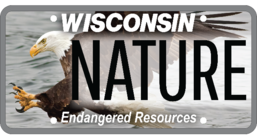
Since 1995, sales from the Endangered Resources license plates have played a critical role in funding DNR conservation work for more than 400 wildlife species and 300 plant species listed as endangered, threatened or special concern. Wisconsin’s Endangered Resources Program works to identify, protect and manage native plants, animals and Wisconsin’s natural communities from the common to the critically endangered.
Revenues from plate sales, along with tax form donations and state matching funds, have accounted for up to 40% of funding for endangered species conservation in some years, and has supported the recovery of bald eagles, trumpeter swans and other species while preventing hundreds of other species from vanishing from Wisconsin. In 2020, the Endangered Resources license plate sales raised $434,463 for conservation of endangered resources.
“We want to make it more accessible for anyone who wants to participate in the conservation of Wisconsin’s rare and endangered species to do so. The Endangered Resources license plate rebate offer is a great opportunity to join our team of caretakers,” said Drew Feldkirchner, DNR Natural Heritage Conservation Director. “The $25 rebate makes it easier for people to help protect Wisconsin’s cave bats and countless other native species in need.”
How To Buy An Endangered Resources Plate And Get A Rebate
The Endangered Resources plate costs $40, with $15 going to the Wisconsin Department of Transportation (WisDOT), and $25 going to the DNR’s Endangered Resources Fund. After the first year of purchase, Endangered Resources license plate holders pay an annual $25 donation fee to keep their plate, and the donation is transferred from WisDOT to the DNR’s Endangered Resources Fund.
The rebate offer is available through Dec. 31, 2021 for people who buy new Endangered Resources license plates, or for current plateholders who switch from one plate design to another. License plates can be purchased at any time and there is no need to wait for registration renewal.
To buy a new plate, fill out the WisDot Endangered Resources License Plate Application Form (WisDOT form MV2858) and download and print off a $25 rebate coupon from the DNR’s website. Please allow up to six weeks for processing the rebate checks.
|
|
|
|
|
|
 |
| NEWS RELEASE: Learn To Hunt With The DNR’s Mentored Hunting Program |
| 10/26/2021 |
| |
|
FOR IMMEDIATE RELEASE: Oct. 26, 2021
Contact: Emily Iehl, DNR R3 Coordinator
Emily.Iehl@wisconsin.gov or 608-445-8168
Learn To Hunt With The DNR’s Mentored Hunting Program
MADISON, Wis. – The Wisconsin Department of Natural Resources (DNR) encourages anyone interested in giving hunting a try to consider purchasing a mentored hunting license.
The Mentored Hunting law allows new hunters of any age to pair up and hunt with an experienced mentor before completing a Hunter Safety course. The two hunt within arm’s reach of each other, allowing the mentee to learn and ask questions while enabling the mentor to keep a close eye on safety and provide guidance as the hunt unfolds.
Mentees And Mentors
A mentee may be either:
- Any person under age 12, regardless of whether they have completed a required hunter education course.
- Any other person who has not completed a required hunter education course, and is not exempt from the hunter education requirement.
A mentor is an individual who meets all of the following requirements:
- Age 18 or older.
- Is the mentee's parent or guardian, or has the permission of the mentee's parent or guardian. This does not apply if the mentee is age 18 or older.
- Has completed a required hunter education course, or is otherwise exempt* from the hunter education requirement.
Mentors with the appropriate license and harvest authorizations may carry a firearm and hunt alongside their mentee.
Mentored Hunting Program Rules
Mentees must stay within arms reach of their mentor. Mentees under 18-years-old are not allowed to possess or use handguns for hunting.
Both mentor and mentee must comply with all hunting laws, including season, bag limit and weapon regulations; and proper hunting approvals such as license, permit and harvest authorization must be acquired for the season.
A complete list of mentored hunting program rules are avilable on the DNR website here.
Mentored Hunting License And Cost
Those interested in mentored hunting must purchase a mentored hunting license through the DNR’s Go Wild online license portal. The cost for a mentored hunting license is the same price as a regular hunting license. If the license is the first the individual has purchased for certain species in the last 10 years, it may be eligible for the first-time buyer discounted price of $5.00.
More information on mentored hunting is available on the DNR website here.
More Ways To Learn
In addition to the Mentored Hunting program, new or interested hunters can participate in the DNR’s Learn to Hunt programs that combine classroom and field instruction to learn how to hunt safely and ethically in Wisconsin.
The DNR-sponsored Hunt For Food programs also provide a more in-depth Learn to Hunt experience for newer adult hunters and their families with a focus on sustainable harvest of wild game. For more information and enrollment instructions visit the DNR’s Hunt For Food page.
|
|
|
|
|
 |
| NEWS RELEASE: DNR Working With Multiple Agencies To Remove Invasive Carp From Mississippi River Oct. 25-29 |
| 10/26/2021 |
| |
|
FOR IMMEDIATE RELEASE: Oct. 26, 2021
Contact: DNR Office of Communications
DNRPress@wisconsin.gov
DNR Working With Multiple Agencies To Remove
Invasive Carp From Mississippi River Oct. 25-29
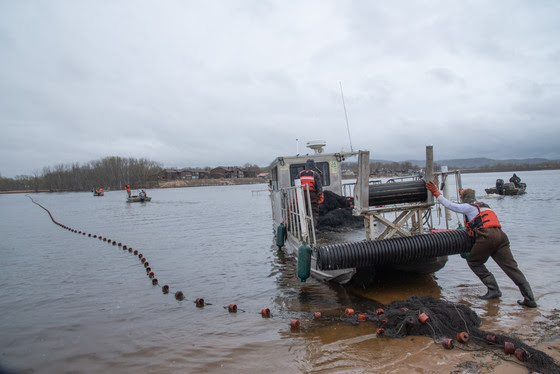
This is the second time MUM has been used in Wisconsin or Minnesota waters. Thirty-four silver carp were captured in Pool 8 during the first interagency carp removal operation in April. / Photo Credit: Minnesota DNR
LA CROSSE, Wis. – The Wisconsin Department of Natural Resources (DNR) alongside neighboring state and federal agencies are conducting an intensive invasive carp removal effort in Pool 8 of the Mississippi River near La Crosse Oct. 25-29.
The Wisconsin DNR is working with the Minnesota DNR, the U.S. Geological Survey (USGS) and the U.S. Fish and Wildlife Service (USFWS) using the innovative Modified Unified Method (MUM). This is the second time MUM has been used in Wisconsin or Minnesota waters. Thirty-four silver carp were captured in Pool 8 (La Crosse and Vernon Co.) during the first interagency carp removal operation in April.
There will be no impacts to commercial or recreational boat traffic on the main channel of the Mississippi River.
Developed by the USGS, the MUM method uses block nets to create compartments or "cells." The USGS then uses electrofishing boats and boats outfitted with underwater speakers to herd carp from each cell. When a cell is cleared, another net is used to close the cell and prevent the fish from returning.
This process is repeated one cell at a time, gradually reducing the area available to the carp and concentrating the fish into a harvest removal area. A large commercial seine net will then be used to draw out the congregated fish. Native fish do not seem to respond in the same way as the invasive carp, preferring to hide, rather than run, from the sound stimulus.
“This is an effective technique to remove invasive carp from our rivers. These fish continue to threaten Minnesota and Wisconsin waterways, including those that flow through two national parks – the Mississippi National River and Recreation Area and the St. Croix National Scenic Riverway,” said Christine Goepfert, associate director of the National Parks Conservation Association and co-lead of the Stop Carp Coalition. “We need to use every tool we can to remove invasive carp and minimize opportunities for them to reproduce."
The DNR and other agencies will report the results when the operation and follow-up analyses are complete.
Invasive carp captures must be reported to the DNR immediately. If you believe you have captured an invasive carp, please put it on ice and send a picture of the carp to Jordan Weeks, DNR Mississippi River Fisheries Biologist, at Jordan.Weeks@wisconsin.gov or 608-386-0970.
Learn more about how you can do your part to help prevent the spread of invasive aquatic species.
More information about invasive carp is available on the DNR's invasive carp webpage.
|
|
|
|
|
 |
| NEWS RELEASE: 2021 Bear Season Shows Return To Recent Harvest Average |
| 10/26/2021 |
| |
|
FOR IMMEDIATE RELEASE: Oct. 26, 2021
Contact: Randy Johnson, DNR Large Carnivore Specialist
Randy.Johnson@wisconsin.gov or 715-499-0010
2021 Bear Season Shows Return To
Recent Harvest Average
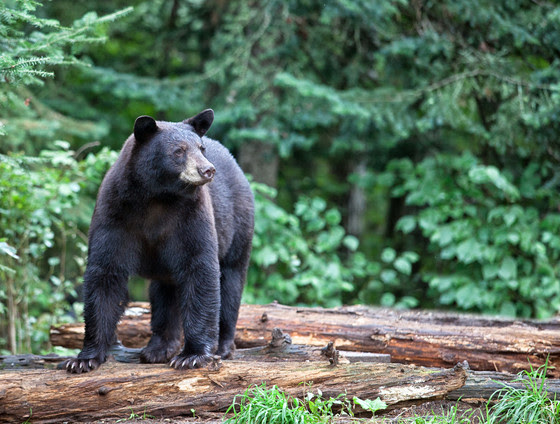
Black bear harvest returned to recent average in the 2021 season. / Photo Credit: iStock / Lynn_Bystrom
MADISON, Wis. – Early results from the Wisconsin Department of Natural Resources (DNR) show hunters harvested 3,802 bears during the 2021 black bear season, a decrease from the 4,306 taken last year.
The 2021 harvest results are similar to the 2018 and 2019 harvests. While overall numbers fell short of the total quota, several zones were at or near harvest objectives, and statewide hunter success (32%) remained nearly equal to the last several years.
“This fall marked the first season using new harvest zones as outlined in the black bear management plan,” said Randy Johnson, DNR Large Carnivore Specialist. “The reconfigured zones better reflect the bear population distribution across the state and allow a more fine-tuned approach to management based upon conditions in each zone.”
The 2020 season saw above-average hunter success rates contributing to a higher harvest. Harvested bear data from hunters is critical to tracking bear population trends and in ensuring the population remains healthy while also achieving population management objectives.
Harvest data indicates Zones A and B in the north and northeastern parts of the state performed well, with hunter success at 62% and 56%, respectively. Zone C located in the central part of the state fell short of its quota, with hunter success a bit lower than expected.
In the northwestern part of the state, the Zone D quota and license levels were increased significantly this fall to reduce the bear population across the zone and agricultural damage issues in the area. Despite only taking 70% of the quota in this zone, the 1,251 bears harvested represent the highest harvest in the area in at least a decade. In Zone D, harvest projections indicate this level of harvest is likely to result in a slight population reduction.
Finally, while neither Zones E nor F in the western and southern parts of the state reached their harvest quotas, the actual number of bears taken in those areas was at or above levels in recent years.
Zone-specific preliminary registration information is as follows:
|
Zone
|
Preliminary Harvest
|
Harvest Quota
|
Percentage of Quota Harvested
|
Hunter Success Rate
|
|
A
|
1,227
|
1,100
|
112%
|
62%
|
|
B
|
711
|
750
|
95%
|
56%
|
|
C
|
484
|
600
|
81%
|
16%
|
|
D
|
1,255
|
1,800
|
70%
|
34%
|
|
E
|
100
|
160
|
62%
|
6%
|
|
F
|
25
|
30
|
83%
|
8%
|
|
Statewide Total
|
3,802
|
4,440
|
86%
|
32%
|
Nearly 130,000 people applied for a bear hunting license or preference point for the 2021 season, setting a record number of applicants.
“Interest in bear hunting continues to grow in Wisconsin and across the nation,” said Johnson. “With growing demand and a limited number of licenses, we encourage the public to review management zone boundaries and license wait times as they make their hunting plans.”
A full breakdown of the 2021 bear license drawing is available on the DNR website.
Hunters wishing to obtain a license or preference point for the 2022 season are encouraged to apply through Go Wild before the Dec. 10 deadline. Hunters should make sure to check the new zone map before selecting their zone in Go Wild.
Visit the DNR website to learn more about black bear ecology, history and management in Wisconsin and to review the Wisconsin Black Bear Management Plan, 2019-2029.
|
|
|
|
|
 |
| NEWS RELEASE: Fall 2021 Wolf Hunt Update |
| 10/27/2021 |
| |
|
FOR IMMEDIATE RELEASE: Oct. 27, 2021
Contact: DNR Office of Communications
DNRPress@wisconsin.gov
Fall 2021 Wolf Hunt Update
MADISON, Wis. – Following a circuit court’s ruling enjoining the Wisconsin Department of Natural Resources (DNR) from implementing the wolf harvest law, the DNR today announced that licenses have not been issued to state hunters and trappers for the Fall 2021 wolf hunt.
In accordance with the court order and the department’s ongoing plans, the DNR will continue working towards promulgation of rules and the completion of a wolf management plan to guide management decisions.
If you suspect wolves in the depredation of livestock, pets or hunting dogs, or if wolves are exhibiting threatening or dangerous behavior, contact USDA-Wildlife Services staff immediately. If in northern Wisconsin, call 1-800-228-1368 or 715-369-5221; if in southern Wisconsin, call 1-800-433-0663 or 920-324-4514.
For more on wolves in Wisconsin, visit the DNR website for additional information on wolf management and wolf conflict abatement.
|
|
|
|
|
 |
| NEWS RELEASE: State Agencies To Host Virtual Listening Sessions For Wisconsin Environmental Equity Dashboard |
| 10/28/2021 |
| |
|
FOR IMMEDIATE RELEASE: Oct. 28, 2021
Contact: DNR Office of Communications
DNRPress@wisconsin.gov
State Agencies To Host Virtual Listening Sessions For Wisconsin Environmental Equity Dashboard
Community Listening Sessions To Be Held Nov. 2, 4 And 6

Four state agencies and partnering organizations are working together to develop the Wisconsin Environmental Equity Tool (WEET), a public health and environmental equity mapping dashboard. / Photo Credit: iStock/mladenbalinovac
MADISON, Wis. – Gov. Tony Evers recently announced that four state agencies and partnering organizations are developing the Wisconsin Environmental Equity Tool (WEET), a public health and environmental equity mapping dashboard.
The collaboration between the Department of Natural Resources (DNR), Department of Administration (DOA), Department of Health Services (DHS) and the Wisconsin Economic Development Corporation (WEDC) is designed to locate and compare public health and environmental impacts across the state to advance equity.
The dashboard will allow community members, government and elected officials, public health professionals and nonprofits to pinpoint Wisconsin's communities most impacted by environmental, public health and climate vulnerability. This information will also help identify the environmental challenges and prioritize funding priorities to build healthy, resilient communities.
The public is invited to participate in a series of upcoming online listening sessions in November to ensure the mapping tool reflects the experiences of people affected by gaps in environmental and public health protections.
The sessions are also an opportunity for state agencies to connect directly with underserved communities often facing the greatest environmental and health consequences, including Tribal Nations, communities of color and low-income families. Agency staff and environmental health experts will facilitate the sessions’ small group discussions.
Wisconsin is joining other states in applying technology like the WEET dashboard to reduce health and environmental inequities. Other states such as California, Maryland and Washington have all created environmental justice screening and mapping tools. WEET and other state tools give state and local leaders a complete picture of the cumulative impacts of health and environmental inequities and to help them make informed decisions to improve the health, resilience and sustainability of affected communities.
LISTENING SESSION DETAILS
- Join the Nov. 2 session via Zoom here.
- Join the Nov. 4 session via Zoom here.
- Join the Nov. 6 session via Zoom here.
Registration is encouraged but not required.
Spanish and Hmong interpretation for the listening sessions will be offered by request. In-person listening sessions may be scheduled in the future when it is safe to gather indoors.
Those unable to attend the scheduled listening sessions are encouraged to provide written comments and sign up for project news here.
|
|
|
|
|
 |
| NEWS RELEASE: Know Your Target: Don’t Accidentally Shoot Swans This Hunting Season |
| 10/28/2021 |
| |
|
FOR IMMEDIATE RELEASE: Oct. 28, 2021
Contact: Taylor Finger, DNR Wildlife Biologist
Taylor.Finger@wisconsin.gov or 608-266-8841
Sumner Matteson, DNR Avian Ecologist
Sumner.Matteson@wisconsin.gov or 608-225-0586
Know Your Target: Don’t Accidentally Shoot
Swans This Hunting Season

It is illegal to hunt native trumpeter swans, tundra swans and non-native mute swans. Other large white birds, including American white pelicans and whooping cranes, are also illegal to hunt. / Photo Credit: Tom Koerner / USFWS
MADISON, Wis. – The Wisconsin Department of Natural Resources (DNR) reminds hunters to know their target before they shoot and understand the difference between swans and other waterfowl this hunting season.
All Wild Swans Are Protected In Wisconsin
It is illegal to hunt native trumpeter swans, tundra swans and non-native mute swans. Other large white birds, including American white pelicans and whooping cranes, are also illegal to hunt. Shooting a swan may result in a fine and a revocation of all hunting, fishing and trapping privileges.
Waterfowl hunters may encounter various swan species while afield. Swans are more abundant and widespread in Wisconsin than a generation ago and will start migrating through the state over the next few weeks.
The population of the once-endangered trumpeter swan now exceeds 11,000 since their successful reintroduction by the DNR and our partners. Reintroduction efforts started in the late 1980s. The efforts were highlighted in the Wisconsin Natural Resources magazine.

How To Identify A Swan
- Trumpeter swans are North America’s largest native waterfowl species at 4.5 to 5 feet long, weighing between 20 to 30 pounds with a wingspan over 7 feet.
- Tundra swans are slightly smaller and are best distinguished by their high-pitched quavering call, unlike the deep, trumpet-like call of the trumpeter swan.
- Non-native mute swans are similarly sized to both trumpeter and tundra swans but can be distinguished by its orange bill – both native swans have black bills – and prominent black fleshy knob extending from the base of the bill to the forehead.
Snow Geese Are Legal To Hunt
Snow geese are significantly smaller than Wisconsin's swan species. Snow geese are 2 feet long, 5 to 6 pounds and have a wingspan of 4.5 feet. Snow geese also have pink bills and black tips visible on the underside of their wings during flight. Snow geese are infrequent visitors to Wisconsin, while the native swans are much more abundant.
For more information about trumpeter swan identification, photos and tips for how to tell trumpeter swans apart from other large white birds visit the DNR’s Swans in Wisconsin webpage and The Trumpeter Swan Society’s website.
|
|
|
|
|
 |
| NEWS RELEASE: DNR Confirms CWD Detected In Fond Du Lac County |
| 10/29/2021 |
| |
|
FOR IMMEDIATE RELEASE: Oct. 29, 2021
Contact: James Christopoulos, DNR Wildlife Biologist
James.Christopoulos@wisconsin.gov or 920-387-7879
DNR Confirms CWD Detected In Fond Du Lac County
Baiting And Feeding Ban Renewed In
Fond Du Lac And Winnebago Counties
MADISON, Wis. – The Wisconsin Department of Natural Resources (DNR) confirms a wild deer tested positive for chronic wasting disease (CWD) in the Town of Eldorado in north-central Fond du Lac County, within 10 miles of the Winnebago County border. As required by state law, the DNR will renew the baiting and feeding bans in Fond du Lac and Winnebago counties.
A local landowner reported the deer, an adult doe, to the department in early October. The deer showed outward signs of disease and possible injury by car collision. This is the first wild deer detection in Fond du Lac County.
To help slow the spread of CWD, the DNR enacts baiting and feeding bans in counties where deer have tested positive for CWD as required by state law. Bait piles can encourage deer to congregate unnaturally around a shared food source where sick deer can spread CWD through direct contact with healthy deer or by leaving behind infectious prions in their saliva and urine.
More information regarding baiting and feeding regulations and CWD in Wisconsin is available here.
Baiting and feeding were already banned in Fond du Lac County and Winnebago counties due to CWD detections in adjoining counties within 10 miles of the county line. This most recent detection will extend the ban for three years in Fond du Lac County and for two years in Winnebago County.
The DNR asks deer hunters within Fond du Lac and Winnebago Counties to assist with efforts to identify where CWD occurs. Those harvesting deer within 10 miles of the most recent positive are especially encouraged to have their harvested adult deer tested for CWD. Collecting CWD samples is essential for assessing where and to what extent CWD occurs in deer across the state.
As ever, successful CWD management depends in part on citizen involvement in the decision-making process through local County Deer Advisory Councils (CDAC). The DNR and the Fond du Lac CDAC will hold a public meeting on the status of CWD and a response plan for sampling wild deer in Fond du Lac County. The meeting will take place Tuesday, November 16 at 6 p.m. at the Radisson Hotel and Conference Center (Meeting Room B) located at 625 W Rolling Meadows Drive in Fond du Lac.
CWD is a fatal, infectious nervous system disease of deer, moose, elk and reindeer/caribou. It belongs to the family of diseases known as transmissible spongiform encephalopathies (TSEs) or prion diseases. CWD occurs only in members of the Cervidae or deer family - both wild and captive. The Wisconsin DNR began monitoring the state's wild white-tailed deer population for CWD in 1999. The first positives were found in 2002.
Information on how to have deer tested during the 2020-21 hunting seasons is available here.
|
|
|
|
|
 |
| NEWS RELEASE: DNR Completes Fish Stocking In Forestville Flowage |
| 10/29/2021 |
| |
|
FOR IMMEDIATE RELEASE: Oct. 29, 2021
Contact: Nick Legler, DNR Fisheries Biologist
Nicholas.Legler@wisconsin.gov or 920-746-5112
DNR Completes Fish Stocking In Forestville Flowage
Partners With U.S. Fish And Wildlife Service National Fish Hatchery To Reestablish Fish Populations

The DNR works with local partnering agencies to stock the Forestville Flowage with largemouth bass and bluegills to reestablish fish populations. / Photo Credit: Wisconsin DNR
MADISON, Wis. – The Wisconsin Department of Natural Resources (DNR) recently partnered with the U.S. Fish and Wildlife Service National Fish Hatchery in Genoa, Wis., to stock largemouth bass and bluegill into the Forestville Flowage, a 65-acre lake in Door County.
Between 2019-2021, the Door County Soil and Water Conservation Department and the Door County Facilities and Parks reduced the water level of the Forestville Flowage to create improved fish habitat following restored water levels.
In mid-October, 2,351 largemouth bass, averaging 3.3 inches, and 47,949 fingerling bluegills were stocked into the Forestville Flowage. The largemouth bass were provided by the DNR’s Northfield Lake Fish Rearing Station in Jackson County and the U.S. Fish and Wildlife Service National Fish Hatchery in Genoa, Wis., provided the bluegills. The DNR stocked all of the fish.
“With water levels restored, largemouth bass and bluegill stocking efforts aim to reestablish fish populations and create future opportunities for anglers,” said Nick Legler, DNR Fisheries Biologist.
On average, bluegill reach 6 inches in four years, and bass grow to 14 inches in four to five years, which will lead to enhanced fishing on the flowage. In addition to providing angling opportunities, stocked bass and bluegill may also benefit the ecosystem of the flowage by helping control carp populations through predation or consumption of tiny carp fry.
More information about fishing in Wisconsin is available on the DNR website here.
|
|
|
|
|
